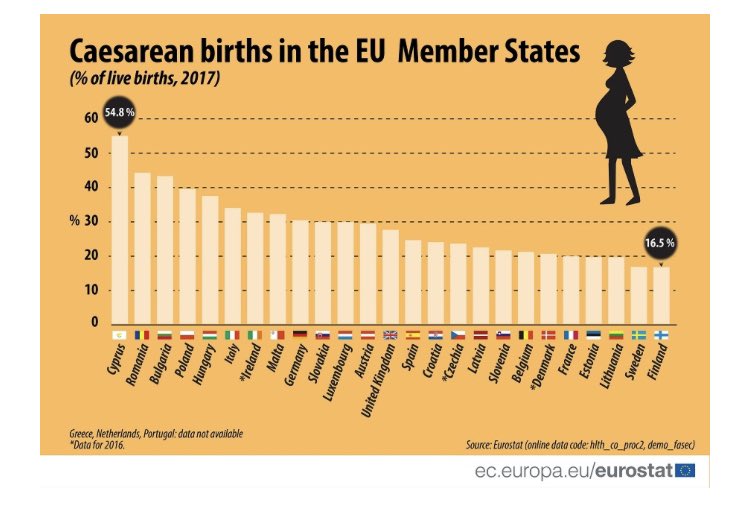Poland’s government had adopted a new demographic strategy that it hopes will address the country’s declining birth rate, which is one of the lowest in Europe. Among the measures are plans to reduce the number of women giving birth by caesarean section, which is among the highest in Europe.
Data from last year’s census has confirmed that Poland’s population is shrinking and ageing. Figures from Statistics Poland (GUS), a state agency, also show that last year saw the lowest number of births in Poland since the Second World War.
That resulted in the fertility rate – the average number of children born to a woman over her lifetime – falling to 1.32 in Poland, well below the so-called replacement rate of around 2.1 required to sustain the population level.
In response to such challenges, the government this week officially adopted the “Demographic Strategy 2040”, a set of policy aims first announced last year.
“The main objective is to get out of the low fertility trap and approach a fertility level guaranteeing the replacement of generations,” says the document.
The plans aim to support families by meeting housing needs, improving financial security, promoting a family-friendly culture and labour market, and developing childcare and healthcare, including in relation to reproductive health.
The latter goal includes “reducing the scale of deliveries through caesarean sections”, which are surgical procedures by which babies are delivered through an incision in the mother’s abdomen. They made up 45% of births in Poland in 2018, one of the highest figures in Europe.

“[Caesarean section] is a faster procedure than a physiological delivery, but it is associated with the risk of complications,” says the strategy document.
The World Health Organisation (WHO) also notes that, while C-sections are sometimes medically justified, they can be “associated with short and long term risk…affect[ing] the health of the woman, her child, and future pregnancies”.
Its data show that increasing C-section rates to 10% helps decrease maternal and neonatal mortality, but increases beyond that level do not see further reductions. Rising rates of C-sections around the world indicate “increasing numbers of medically unnecessary, potentially harmful procedures”, says WHO.
Under Polish health ministry guidelines, C-sections are supposed to be performed only when deemed medically necessary, and not on demand, notes legal news outlet Prawo.pl. However, many parents find ways to obtain the procedure outside those regulations.
The government’s plans do not, however, include support for in-vitro fertilisation (IVF), despite the problem of infertility affecting roughly 1.5 million couples in Poland, around 20% of the population of reproductive age, according to estimates by the Polish Gynaecological Society.
IVF treatment received state funding until 2015, but that was ended by the new national-conservative Law and Justice (PiS) government, which remains in power. The main opposition party recently launched efforts to restore the funding.
“The failure to include effective infertility treatments renders the [government’s demographic] programme incomplete,” Grzegorz Mrugacz, medical director of Bocian, an infertility clinic, told the Rzeczpospolita daily.
This month, PiS chairman Jarosław Kaczyński caused controversy by claiming that Poland’s low birth rate is in part caused by young women consuming too much alcohol.
Main photo credit: Jimmy Conover/Unsplash

Alicja Ptak is senior editor at Notes from Poland and a multimedia journalist. She previously worked for Reuters.



















